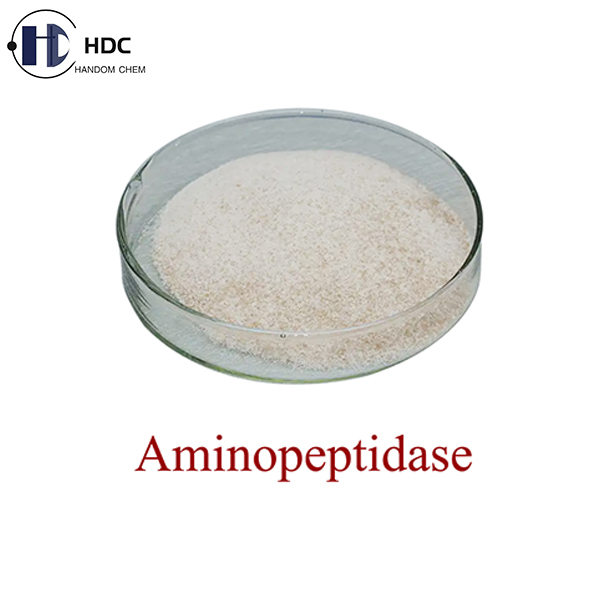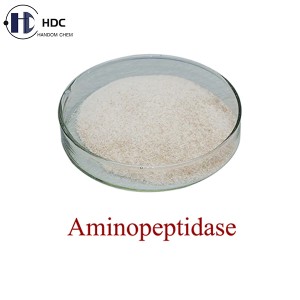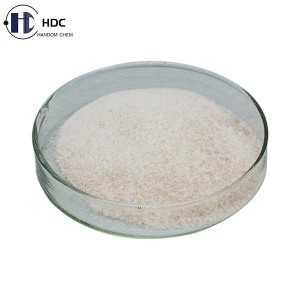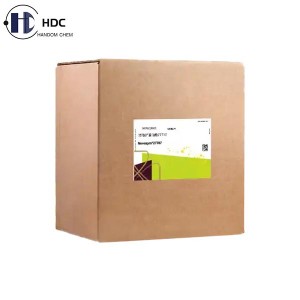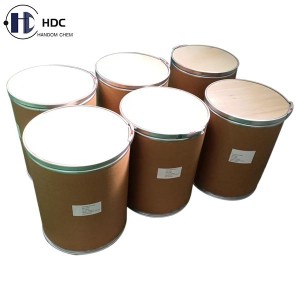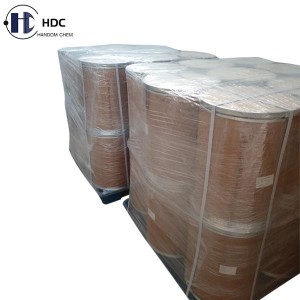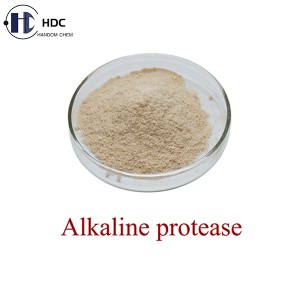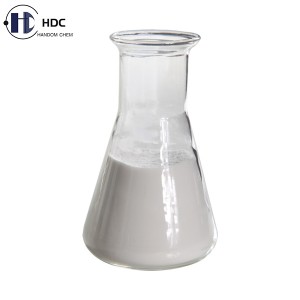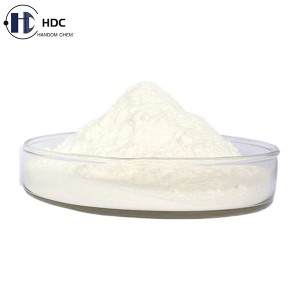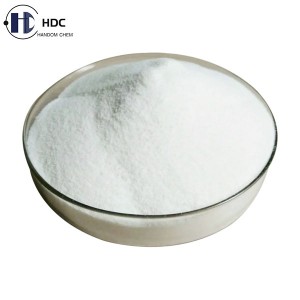Aminopeptidase
PRODUCT DESCRIPTION:
Aminopeptidase is obtained by fermentation of Aspergillus oryzae, through advanced extraction technology, ultrafiltration concentration, drying and refining.
Aminopeptidase is a type of enzyme that hydrolyzes amino acids sequentially from the N-terminus of the polypeptide chain to free the amino acids one by one. It can not only hydrolyze polypeptides, but also hydrolyze intact protein molecules.
Aminopeptidase has good applications in debittering protein hydrolysate, deep hydrolysis of protein, preparation of bioactive polypeptides, medical research, etc.
MECHANISM OF ACTION:
Adding appropriate aminopeptidases during food processing can hydrolyze flavor precursors, thereby releasing flavor substances and enhancing and improving the flavor of food.
Aminopeptidases can also control the bitterness of peptides. The principle is that aminopeptidases release one amino acid from the end of the polypeptide chain each time, hydrolyzing short-chain peptides containing hydrophobic amino acids, thereby completely degrading bitter peptides into amino acids.
SPECIFICATIONS OF AMINOPEPTIDASE(≥5000 U/g):
| Test Items | Specifications |
| Characteristics | White, off-white or light yellow, yellow-brown fine powder, with a slight fermentation smell, no peculiar smell, slight agglomeration is allowed |
| Moisture | Not more than 8.0% |
| Enzyme activity | Not less than 5000 U/g |
| Particle Size | ≥80% pass through 40 mesh sieve |
| Lead (Pb) | Not more than 5.0 mg/kg |
| Total Arsenic (As) | Not more than 3.0 mg/kg |
| Total Plate Count | Not more than 50000 CFU/g |
| Salmonella | Negative/25g |
| Escherichia coli | Not more than 10 CFU/g |
| Coliform Group | Not more than 30 CFU/g |
SPECIFICATIONS OF AMINOPEPTIDASE(≥30000 U/g):
| Test Items | Specifications |
| Appearance | Light brown powder |
| Odour | Slightly odour |
| Moisture | Not more than 8.0% |
| Enzyme activity | Not less than 30000 U/g |
| Particle Size | ≥80% pass through 40 mesh sieve |
| Lead (Pb) | Not more than 5.0 mg/kg |
| Total Arsenic (As) | Not more than 3.0 mg/kg |
| Total Plate Count | Not more than 10000 CFU/g |
| Salmonella | Negative/25g |
| Escherichia coli | Not more than 3 MPN/g |
| Moulds & Yeasts | Not more than 100 CFU/g |
APPLICATIONS:
♔ Meat hydrolysate to make flavours;
♔ Protein hydrolysate for functional foods;
♔ Hydrolysis of skeletons and proteins of aquatic fish, shrimp, oysters, clams and seafood;
♔ Production of osteoin, bone oil, bone glue and collagen;
♔ Production of seasonings such as yeast extract;
♔ Improvement in yield and ease of processing for yeast extract;
♔ Phagostimulant production for pets and chondroitin sulfate extraction;
♔ Medical Cleaning - Removing blood stains from equipment surfaces.
USAGE:
The recommended dosage is 0.01-0.2 kg enzyme preparation per ton of raw materials. (0.01‰ ~ 0.2‰)
However, due to differences in application areas and raw material composition and process parameters in each factory, the actual addition method and dosage of this product should be determined through experiments.
SAFETY OF USE:
Enzymes are proteins and inhalation of dust or aerosols may produce sensitization effects, leading to allergic reactions in humans. Some enzymes may irritate the skin, eyes and mucous membranes if exposed for a long time; splashing and strong agitation may cause inhalable dust. Protective clothing, gloves and eye or face protection are recommended.
NOTE:
After opening a bag or drum, if the product is not completely used, the bag mouth should be tied tightly or the drum lid should be tightened to prevent the effective active ingredients from becoming inactive.
PACKAGING & STORAGE:
1. Packaging: 1kg/Aluminum Foil Bag, 20kg/Carton or 25kg/Fibre Drum.
2. Aminopeptidase is an active biological preparation. It should be kept in sealed containers in a dry and cool place; protected from direct sunlight.
3. This product has a shelf life of 12 months when originally packaged in a cool and dry environment.


